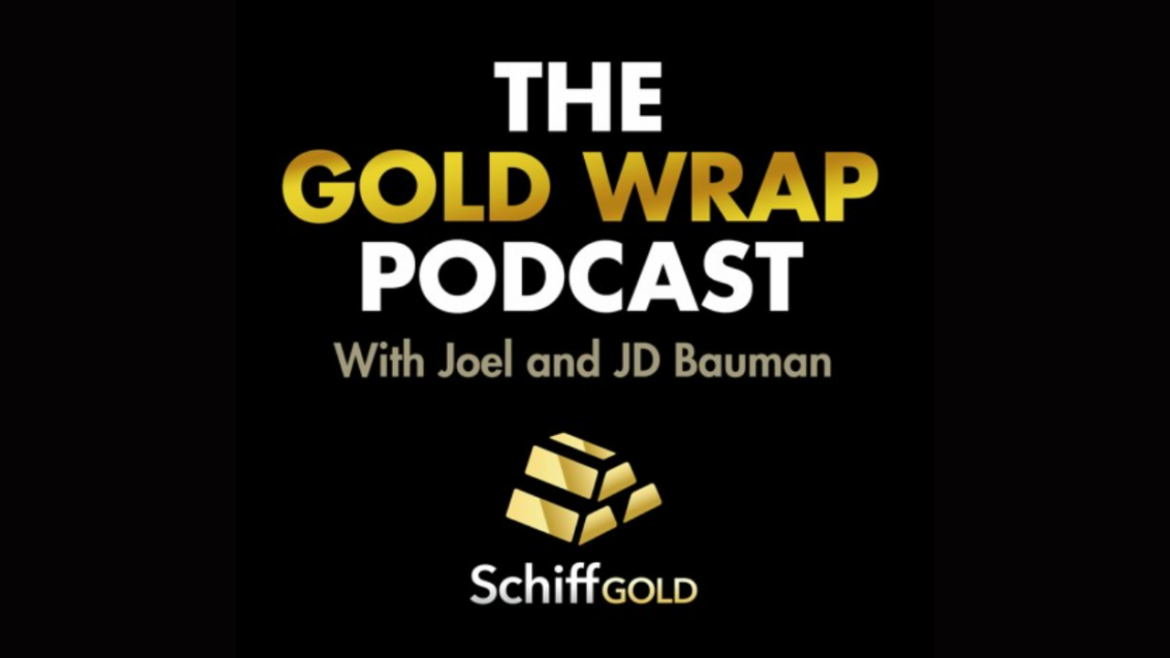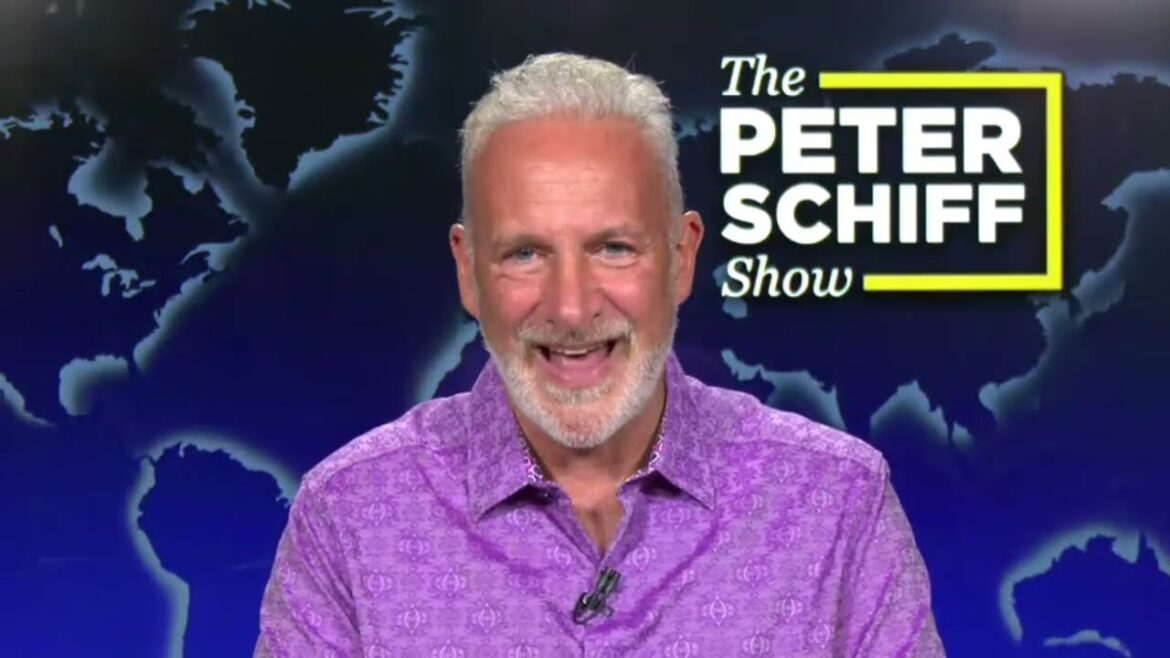Gold has all the potential to go unprecedentedly high. But silver will be gold on
Site:
Precious metals news
Innovation has a silent killer… a scourge that America has aided and abetted for over a century.Innovative activity is the backbone of the economy. Because of Google, Honda, and Netflix, life is easier for billions of people around the globe. A Stanford study found that up to 85% of economic growth is due to innovation. But what if all of this innovation never happened? For that matter, how much innovation could have happened, but never did because of government policy?
With Mother's Day around the corner, gold is up almost $60 on the week. Bad jobs numbers and terrible consumer sentiment have soured economic expectations. The Fed is more likely to lower interest rates sooner, but it's too late to save the economy from the inflation to come.
 THE GREAT OIL SHALE NOTHING BURGER: My Debate With Tom Luongo Why Oil Shale Isn't Economical
THE GREAT OIL SHALE NOTHING BURGER: My Debate With Tom Luongo Why Oil Shale Isn't EconomicalMay 10, 2024
I can honestly say you are in for a treat today with my newest Video Report on the Great Oil Shale Nothing Burger. According to Tom Luongo, there seems to be a new "Massive" oil discovery in the western United States. This is supposed to double the world's oil reserves—OR IS IT...
Could gold be the key to solving America’s debt crisis?
While gold bullion is most often sold in bar or 1oz coin form, the Korean retail market is benefitting from gold’s latest success with a very atypical marketing strategy. It has been traditionally thought that investors prefer larger increments of bullion because they simplify calculations and have a lower transaction cost than buying the same amount of gold in smaller increments. Demand for traditional bars and coins in South Korea rose 27% year on year, but the most interesting development arises from South Korean vending machines and convenience stores.
The global surge in solar power adoption is significantly increasing the demand for silver, which is essential for making photovoltaic (PV) panels due to its superior electrical conductivity and thermal efficiency. With silver prices reaching their highest in a decade, mining companies are ramping up production to meet this demand. Last year, global investment in solar PV manufacturing skyrocketed to approximately $80 billion, representing 40% of the world’s clean technology manufacturing investments, according to the International Energy Agency. Notably, China has more than doubled its investment in solar PV manufacturing from 2022 to 2023. This investment has contributed to a 50% increase in global renewable capacity last year, with solar PV accounting for three-quarters of this growth, marking the fastest expansion in 30 years.
The April 2024 Consumer Price Index (CPI) report, scheduled for release on May 15 at 8:30 a.m. ET, is anticipated to reflect a continuation of this year’s relatively higher inflation trends, with headline inflation expected at 0.4% and core inflation at 0.3%. These figures, according to models from the Cleveland Federal Reserve and forecasts from Kalshi, suggest inflation will remain above the Federal Open Market Committee’s (FOMC) annual target of 2%. Given these conditions, and with another CPI release set for the day of the FOMC’s June meeting, it is unlikely the FOMC will consider interest rate cuts before July, potentially extending further depending on economic indicators such as job market conditions. This scenario supports the expectation that the Federal Reserve might delay any easing of monetary policy if inflation remains stubbornly high.
As the 2024 election approaches, economists are speculating on the potential impact of a Donald Trump victory on U.S. inflation. Predictions suggest that a second Trump term could lead to higher tariffs and increased deficits, among other policies, potentially driving inflation upwards. While economic forecasting is not precise, these predictions are based on previous policies and anticipated future actions that could shape economic conditions.
Inflation, while a key economic indicator, does not impact all demographics uniformly due to the aggregate nature of its measurement. Monthly inflation rates are calculated based on a general basket of goods which may not reflect the true spending habits of various groups, such as low-income or rural families. By examining disaggregated product groups and leveraging high-frequency online price data, researchers can uncover how inflation differentially affects diverse populations, revealing that the experience of inflation varies significantly among different groups.
BCA strategist Roukaya Ibrahim predicts that a recession by early 2025, influenced by continued unemployment and economic difficulties in China, could lead to a 30% decline in the stock market. This view is echoed by Wall Street veteran Gary Shilling, who shared similar concerns with Business Insider. Ibrahim identifies two key factors that signal an impending recession by the end of this year or early next, potentially triggering a significant market correction.
In April, gold prices rose by 4%, closing at $2,307 per ounce, despite a pullback from intra-month highs due to reduced buyer interest and profit-taking, evidenced by lower Chinese premiums, decreased Indian imports, and stable COMEX positions. Conversely, North American gold ETF flows saw a modest increase, aligning with continued strong demand in Asian ETFs.
 Pandemic Savings Depleted: Economic Uncertainty Looms as American Debt Rises
Pandemic Savings Depleted: Economic Uncertainty Looms as American Debt RisesMay 8, 2024 - 15:44:15 EDT
During the pandemic, Americans saved an impressive $2.1 trillion, fueling sustained consumer spending and economic resilience amidst rising interest rates and persistent inflation. However, recent reports from San Francisco Federal Reserve economists Hamza Abdelrahman and Luiz Edgard Oliveira indicate that these pandemic-era savings are now depleted, with many Americans having more debt than savings as of March 2024. This shift from savings to debt raises concerns about the future of consumer spending, which is a key driver of the U.S. economy. With the depletion of excess savings and an increase in consumer debt and delinquencies, there are growing worries about potential economic downturns.
In the wake of the Silicon Valley Bank collapse, the Federal Reserve introduced the Bank Term Funding Program (BTFP) to stabilize the financial sector, but this program has recently expired. Simultaneously, the anticipation of a Federal Reserve rate cut has been delayed indefinitely due to ongoing high inflation. This delay means that banks continue to face tough competition from higher-yielding money market funds for depositors. This dual pressure of the expired assistance program and the deferral of rate cuts poses significant challenges for banks, suggesting that now might be an opportune time to bet against them.
The "Flash Crash" wiped out nearly $1 trillion in market value in minutes, leading to significant regulatory reforms.
 Lingering Effects from Past Economic Shocks Continue to Drive Inflation in 2024
Lingering Effects from Past Economic Shocks Continue to Drive Inflation in 2024May 8, 2024 - 10:56:13 EDT
Three years after the initial economic disruptions of 2021 and 2022, the lingering effects of those events are still significantly influencing inflation rates in 2024. The primary driver of the current inflation, particularly in the shelter sector where rents and homeowners' equivalent rent have increased by 6.1% annually, stems from these past disruptions. According to Goldman Sachs economist Ronnie Walker, this persistent high inflation is more about "lagged catch-up" rather than a new wave of increases, suggesting that once these residual effects dissipate, inflation is expected to stabilize without further severe economic consequences. This pattern is also evident in other sectors, such as motor vehicle insurance, which has seen a 22.2% rise over the last year.
Peter’s back to recap the last week in markets and economic news. This episode starts with April’s dismal stock performance and also discusses Jerome Powell’s most recent appearance. Peter wraps up the episode by recounting the Bitcoin debate he participated in on Friday.
Oil prices dropped to their lowest levels since mid-March, exacerbated by a bearish US stockpile report indicating increased inventory levels. Brent crude approached $82 a barrel, and West Texas Intermediate hovered around $77. Industry estimates suggest a significant rise in crude stockpiles at Cushing, along with increased gasoline and distillate inventories nationwide. This uptick in stockpiles is just one component of a broader market softening, evidenced by negative trends in weekly derivatives and timespreads, suggesting an oversupply not seen since March. The ongoing price decline, which has been consistent over the past month, reflects reduced geopolitical risks and a shifting focus towards the weakening market demand.
On Wednesday, the dollar regained some strength, buoyed by diminished expectations for Federal Reserve rate cuts, while the yen continued its decline, prompting Japanese officials to intensify warnings about potential interventions to support the currency. As the yen hit a 34-year low, dropping to around 160 yen against the dollar, Japan reportedly spent about $60 billion last week in efforts to stabilize it. Meanwhile, in Europe, the Swedish crown weakened following a rate cut by its central bank, which also anticipates two additional reductions this year, and the British pound remained low as markets awaited the Bank of England’s upcoming meeting.
 Hidden Debt: How 'Buy Now, Pay Later' Is Clouding America's Economic Outlook
Hidden Debt: How 'Buy Now, Pay Later' Is Clouding America's Economic OutlookMay 8, 2024 - 09:45:11 EDT
Wells Fargo senior economist Tim Quinlan is raising alarms over “phantom debt,” a growing concern stemming from the popularity of "Buy Now, Pay Later" (BNPL) platforms like Affirm Holdings, Klarna, and Block Inc.’s Afterpay. These platforms, which let consumers split purchases into installments, do not report these transactions to credit agencies. This lack of transparency is troubling for market analysts and economists as it obscures a complete picture of American financial health—a critical element for predictions and planning by central banks, regional lenders, and businesses. This hidden debt layer emerges alongside increasing delinquencies in auto loans and credit cards, suggesting potential cracks in consumer financial stability amidst persistent inflation.
Gold prices remained stable Wednesday, balancing between geopolitical tensions that boosted its safe-haven appeal and a strengthening U.S. dollar that typically diminishes gold's attractiveness to investors holding other currencies. Despite fluctuating conditions, spot gold was flat at $2,315.98 per ounce by midday GMT, while U.S. gold futures saw a minimal decrease of 0.01% to $2,324.00. The dollar's recovery, influenced by speculation about potential Federal Reserve rate cuts, contrasts with the ongoing uncertainty regarding inflation and the Fed's future monetary policy. With traders estimating a 65% likelihood of a rate cut by September, gold's status and pricing reflect a complex interplay of market forces and economic indicators.














